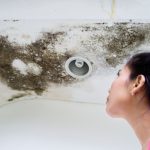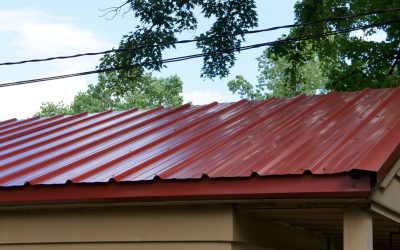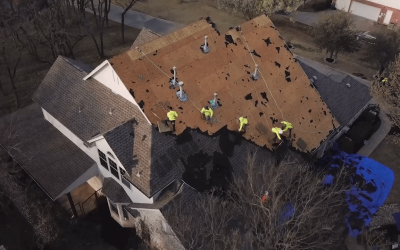Mold can form anywhere there is moisture. If you have ever found it in your home, you know that it can build and grow quickly. Chances are, you have found it in your basement.
Any mold in your home is bad news. You likely also know it is not always easy to get rid of. If there is mold on your roof, it can be there for some time before you are even aware of it.
What is Mold and How Does It Appear on Roofs?
Mold is a common algae that grows in humid conditions. It grows like moss and can take over an area of your roof very quickly. Once established, it will thrive in dark damp areas.
Once it has secured itself on your roof, it can attract bugs and rodents who will then eat away at your damp roofing materials. If left untreated, it can cause a lot of damage quickly.
Mold algae start someplace else but are almost always in the air. These spores of mold travel through the air and land on your roof. If they find a cool damp spot they will start to spread.
Mold can start to grow on your roof due to damage. If the conditions are ripe for mold, then it can happen very rapidly. It will start because moisture has managed to seep into a damaged area.
A broken or missing shingle is a welcome mat for algae and mold. Because it grows so quickly, it can be a long time before you are even aware of it. It may not be visible until it has spread significantly.
Pooling water or small leaks in your roof where there have been damaged tiles or shingles will feed the mold. If left too long, it will start to cause damage much deeper in your roof and spread into your home.
How to Identify and Remove Visible Mold From Your Home’s Roof
There is a good chance that you will be able to smell the mold or mildew long before you ever see any proof of it. It has an unmistakable musty odor that will only get worse as time advances.
You may also start to see darker patches on your roof. These may appear to be green, brown, or black. It may look like a patch of damp, but if there is only one and there for a day or more, then it’s time to get it inspected.
Mold is not easy to remove and should always be treated by a professional. You don’t want to risk getting injured and you may not get it all, which isn’t a solution to the problem, at all.

A mixture of bleach and water is the best way to get rid of mold. The bleach will kill the algae, but depending on the type of roof you have, it may cause discoloration to your roof.
The mixture needs to be spread all over the roof, even in areas that don’t appear to have mold. Once the algae start to loosen and fall, then the roof needs to be hosed off.
Tips for Preventing Mold Growth on Your Home’s Roof
Regular maintenance will help keep your roof in great shape for much longer.
Roof Inspection
To help keep mold from forming, the first thing you need is a roof inspection. This will let you know what is going on up there and if there are any damages, have them repaired.
Remove Overhang
Keep branches trimmed back and off your roof. In the fall, make sure you keep the falling leaves off the roof and out of the eaves.
Clear Gutters
Keep the gutters cleared out. A blockage of leaves or dirt is a breeding ground for mold. If the water isn’t able to drain off the roof, then the moisture can start to cause damage.
Proper Ventilation
If you don’t have ridge vents, consider having them installed. These will help keep air flowing and allow your roof to cool off and dry off. Ridge vents will help keep moisture deposits from forming.
Roof Coating
Treat your shingles, if possible, with a moisture-resistant stain or coating. If you are looking for a roof replacement, consider shingles or tiles that are resistant to moisture and weather damage.
Taking Action Now Can Help You Protect Your Home From Future Mold Damage
If you live in an area with high humidity, high rain, and snow, then choose a roofing material that will stand up to moisture. There are many options available and they can look like any other material at a fraction of the cost.
Contact us today for more information or for a quote to have the mold removed from your roof.




